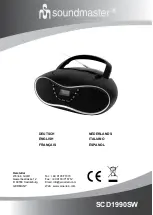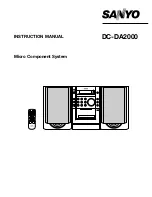
37
Note that adjustment of “H+” by RV5 will also cause a change in H-, as the supply is centre tapped
to 0V by R20 and R21. As the H- rail is bussed through the desk, some interaction of adjustment
between bays may occur if re-adjusted in the console. When on load, some regulation of the heater
supply may occur. This is acceptable as the valve circuits will continue to operate within their
specifications with the heater voltage (H+ to H-) as low as 9V.
Complete removal of the regulator modules requires the 4 fixing screws to be removed, CN2 and
CN3 to be disconnected and their mating cable assemblies to be carefully fed through the module
side cut-out as the module is lifted clear of the console. When re-fitting the regulator module, the
cables must be guided back through the module cut-out as it is lowered into the console. Take care to
leave the valve IDC cables accessible when re-fitting the module.
The regulated DC is taken from the module via CN1 (HT, H+ and H-) to the valve board PC334, and
via CN2 (V+, V- and 48V) to the input backplane, PC356. Note that in the Master Section, V+ and
V- power from CN2 is taken to PC355, and no connection is made to 48V.
2. Valve PCBs.
2.1. Circuit Overview.
The console valves are located on PC334 for the channel bays and PC345 for the Master Section.
Refer to CD1334 and CD1345 respectively. Note that the signal paths for the Master Section are
marked on PC345 component legend layer, and that 2 valves are intentionally not fitted.
Each valve stage consists of one half of an ECC83/12AX7A twin triode operating on an HT voltage
of approximately 175V after filtering. A pair of complementary high voltage discrete transistors in
the anode circuit act as voltage followers, providing higher current drive and power transfer from the
stage. The voltage gain is controlled by local feedback, and is individually trimmed at the NE5532
buffer stage which is inverting for the channel path Insertion Send and Master Section, and non-
inverting for the Monitor path. Refer to the Calibration Procedure for trimmer adjustment.
The HT and heater supplies are linked directly from the Regulator module (PC357), whilst all signal,
ground and +/-15V supplies are connected to the valve PCB’s via their two IDC cables.
CAUTION:
THE REAR SECTION OF THE CONSOLE CONTAINING THE REGULATOR
MODULE AND VALVE PCBs CONTAINS HIGH VOLTAGES, UP TO +250V DC. THE
CONSOLE TOP COVERS SHOULD NOT BE REMOVED WHILST THE CONSOLE IS
CONNECTED TO THE POWER SUPPLY, EXCEPT FOR SERVICE BY A QUALIFIED
TECHNICIAN.
UNDER NORMAL OPERATING CONDITIONS, THE MAXIMUM VOLTAGES PRESENT ON
THE CHANNEL AND MASTER MODULES ARE +48V DC AND +/-15V DC. HOWEVER,
THESE SUPPLIES ARE CAPABLE OF PROVIDING HIGH CURRENTS AND ENERGY, AND
CARE MUST BE TAKEN NOT TO CAUSE A SHORT CIRCUIT.
2.2. Valve Circuit Fault Finding.
Fault finding on the valve circuits is generally straight-forward. The power supplies and IDC cable
connector seating should be checked, after which the signal paths may be followed through with an
















































